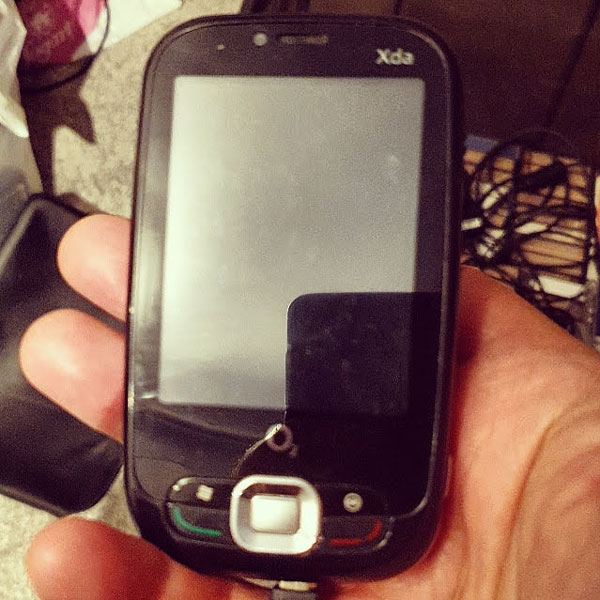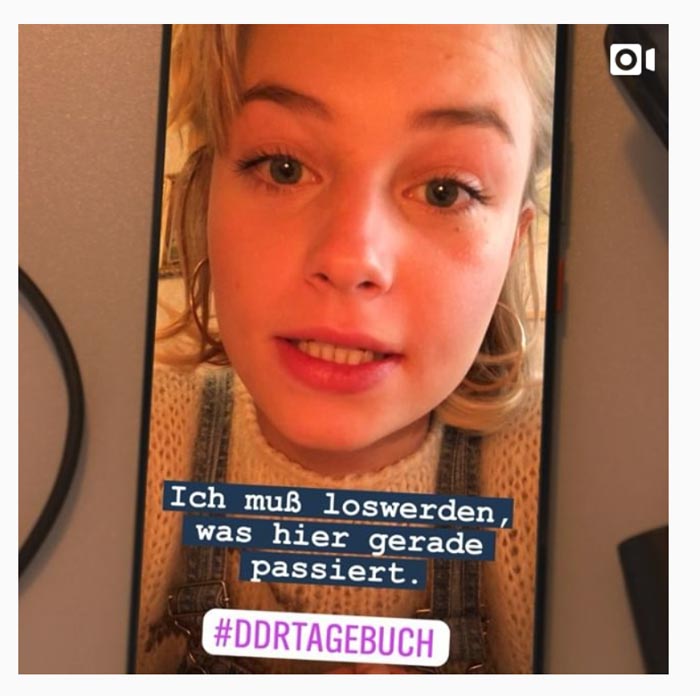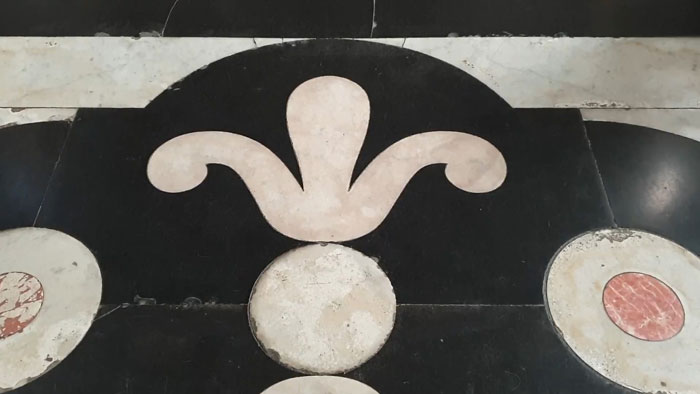Top 3 Mobile Videography Tips
I’ve spent most of my adult life living off my creativity. I’m not wealthy and I haven’t won any oscars, but I have supported myself as a creative pretty much all my life.
Whether you want to be a full time videographer or you just want to improve the look of your videos, understanding creative principles will enable you to be more creative when you approach filmmaking with your smartphone.
Shooting Video is Creative
Why would we want to shoot video using our smartphones?
Well, to the truly creative mind, every tool is a creative opportunity. And what I’m all about is helping people become truly creative. It doesn’t matter what phone you have, if it shoots video you can create engaging content with it.

Even my 10 year old XDA phone (which shoots very low resolution, grainy video) could be used to shoot create engaging content.
Mobile videography is creative. Making YouTube videos is creative. Of course, even shooting videos for TikTok or Instagram is creative.
1. Ask Questions
We often search for “how to” articles and videos for answers to our mobile videography questions. But, my first tip to you as a creative, is to make your mobile videography process about asking questions. At least, in the development phase.
I would say one of the most important characteristics of a creative person is curiosity. And what I’ve learned is that we shouldn’t be in a hurry to answer questions. Rather, we become more creative if we keep asking questions.
For example, “what does this shot look like?” “What if I put the camera here?” “Should I use a diffusion filter?” “Should I use a gimbal, a tripod or hold the camera in my hand?”
And the answer to all those questions is:
It depends
It depends on what you are trying to say as a filmmaker: with a shot, a scene or an entire video.
I think the biggest mistake any new filmmaker can make is to have a question. Like, “Should I use a gimbal for mobile videography?” and need a definitive answer. Even if your question was more defined. For example, “If I want smooth gliding camera shots, should I use a gimbal?”
Well, I can think of 10 different ways to achieve smooth gliding mobile videography shots. So my answer would be: “You can get smooth shots like this, this, this and this… So depends on what you want it to look like”. And what you want it to look like should be defined by what you are trying to say in your video.
On the other hand, if someone tells you to use a gimbal and so every time you want smooth video you reach for your gimbal, you’ve stopped being as creative.
So, if you want to be more creative as a filmmaker, keep asking questions. Try not to have one answer which you then apply to all projects and all situations.
You might think a film director is there to answer questions. But I’ve directed one feature film and 2 science fiction series, and every day on set involved asking a lot of questions. “What if we put this light here? What does this shot look like if the actor moves there and the camera moves here?”
Throwback89
So you might see tips telling you to to avoid Portrait framing and shoot video in Landscape. Shooting in Landscape means holding your phone horizontally rather than vertically.
Throwback89 is a series produced by a big German TV company. It’s also shot on an iPhone and it’s set in 1989, during the period when the Berlin Wall came down. The series was submitted to our smartphone festival last year and was one of the award winners.
Obviously, smartphones didn’t exist in 1989, so what’s going on?
They decided this would be a great way to communicate to a younger generation a major event in the history of Germany. By telling the story as an Instagram story, they felt they could connect better with younger generations.

A big TV company could easily afford expensive, high quality cameras. Therefore, shooting on an iPhone using portrait framing was a creative choice. The makers of this series believed mobile videography would be the best, most fun way to communicate their story to their target audience.
So if you ask the question “Should I shoot video in landscape or portrait?” the answer is: it depends on how you want to tell your story.
The important thing is you think about it and ask yourself why you are filming that way.
2. Beginning, Middle & End
When you’re communicating something via mobile videography, everything usually has a beginning, middle and end. As things change throughout the video, you’re creating some kind of beginning, middle and end.
Now, this is true not only for the video as a whole, but for each individual shot too.
One of the most common problems with videos shared on social media is a lack of care over structure. Videos are often a series of apparently random shots edited together without thought for the structure.
Now, you can be shooting with the highest quality iPhone or Samsung device. But my video shot with my old XDA Zest phone is going to be more engaging than yours if I care more about structure than you.
Yep, structure wins
Because it’s a video’s structure that makes it engaging.
Like I say, every shot has a beginning, middle and end. That means every shot has a structure. And so my third tip for you is to start thinking about the structure of every shot you capture.
A simple tip to get you started adding structure to your shots is to think about where your shot starts, what happens in the middle of the shot and where it ends.

For example, in this shot inside a church I framed the beginning of the shot, counted to 3, now I tilted the camera up, counted to 3 again and then hit stop.
Often, when we’re shooting video, we hit record, immediately move the camera and then as soon as we reach the final framing we hit stop.

Now, if you do this because you know exactly what you want from the shot and you don’t want to pause on the beginning and end shots, then fine. Because you’re thinking about structure and you made a creative choice.
Like I say, there’s no rules
But if you did this because you didn’t really think about it, then you’re not making a creative choice.
In a recent video I made about overcoming the fear of being bad at filmmaking, I put together a series of shots to communicate the story I wanted to tell. And so, I spent some time thinking about each shot and how they would edit together.
For example, in one sequence I am retrieving a box hidden away in the corner of the loft. So, first I wanted this shot of me removing some other items so I could reach this box. And, by the way, I placed a few extra items there to make the shot more interesting.

Why – because then the shot would have more of a beginning, middle and end. If there was just one item to move, the middle of this shot would have been very quick. But I felt the story needed this box to be buried beneath lots of items, which tells the story that this box (a box which represents my past in the story) has been forgotten about.
In reality, I only just placed this box here in the last few weeks. So, you see, as a filmmaker and a storyteller I’m creating an illusion to tell my story. And that involves thinking about the beginning, middle and end.
Sequence structure
But that was just one shot. I grabbed a shot with the camera behind the box, as I pulled the box out. This is a reveal shot – I reveal myself, framed by the window, as I pull the box away from the camera.
I also used my Tiffen Black pro-mist diffusion filter to get the sunlight to spread around me, which gives the shot a more emotional, romantic look.

The next shot, I chose to shoot from the side. So I know this is going to edit with the other shots, of me uncovering and removing the box.
Then I got a shot from above. I’m presuming people watching will now be intrigued to know what’s in the box. This is like one of the oldest tricks in filmmaking and storytelling to keep people gripped.
Design your sequence with a structure
This shot from above will edit with the other shots and – in terms of structure – I’m moving the story towards opening this box.
Now, I could simply start with the overhead shot and opened the box. But I stretched this out because I wanted to communicate to watchers the feeling of digging into the past. I wanted it to be something of a struggle and not just flipping open a box.
So I communicated the idea of a little bit of a struggle by creating this structure. And, like I say, each shot has a beginning, middle and end, as does the whole sequence. And, this sequence is one sequence in a series of sequences that go to creating a whole 10 minute video, which itself has a beginning, middle and end.
The thing is, it’s actually a lot of fun to do this. This is why I love filmmaking. Shooting and editing to create a story.
3. Consistent Shot Style
Once you have got into the habit of asking creative questions, creating shots and sequences with a beginning, middle and end, you can start to think about consistency.
If you are watching a documentary, you might have noticed certain styles of camera work. For example, some shots are handheld and the camera moves almost randomly throughout. The camera operator will also add little zooms in and out and focus changes.
This makes the audience feel more like they’re in the scene, watching. Like we’re secretly spying on a private conversation between the subjects of the doc.
And this isn’t just because the camera operator is holding the camera. The camera operator will often deliberately move the camera slightly while filming to create this sensation of subtle movement.
But, most likely, not every shot is handheld. For example, when these same characters are interviewed directly by the documentary crew, filmmakers often switch to a tripod set up.
That’s because the filmmaker doesn’t need to make us feel like we’re spying for these shots. Rather, the stability of these interview shots gives us the impression that the answers are solid.
Not only does it feel more solid, but it contrasts the feeling of the scenes with handheld footage.
Follow your own rule book
Once documentary filmmakers decide to shoot the live scenes handheld and the interviews with the camera on a tripod, they will stick to this rule throughout the whole film or series. This gives the work a sense of structure.
And it helps the audience differentiate between the different parts of the story: the live stuff is more fluid, the interview stuff is locked down.
No matter what kind of films you’re making with your smartphone, you can think about this too. If you want to shoot a short film or a documentary, before you start filming think about the style of shots you want to use. Think about how the style of the shot tells the story.
This isn’t a rule for the rest of your life as a filmmaker, it’s a rule for this particular project. You may want to use it again or you may want to try different styles. That’s up to you as a filmmaker.
Certainly, if you are just starting out, I would suggest you try as many different styles as you can. Then, after time, perhaps you can settle on something that perhaps characterises you as a filmmaker. As you make more films, you will start to create a style for yourself.
Improve Your Mobile Videography
So, if you do follow a list of dos and don’ts, make sure you think about how these rules define the project you are working on.
By taking a more creative approach to filmmaking, the process becomes more of a journey of discovery. Not only will you find out more about filmmaking, but you’ll discover more about yourself and the world around you.
We often want definite answers to things. Like, “how can I make high quality videos that will make me successful as a filmmaker?” Then we can make the mistake of ticking boxes instead of being creative.
- Shot in 4K – ✔.
- Shot with anamorphic lens flares – ✔.
- Use a gimbal – ✔.
This way of thinking appeals to us because it brings a feeling of certainty to our minds. “This is right and that is wrong”.
But actually, being creative is about being uncertain and exploring that uncertainty. So don’t be afraid of it, embrace it.
When we’re uncertain we think more deeply about what we are doing, we ask more questions. Whereas when we’re following rules, we don’t think at all. Everything is already decided.
Why invent when you already know what you’re supposed to do? But, as I said at the start, true creativity is actually about being curious, so get out there and get discovering.
Eager to learn more?
Join our weekly newsletter featuring inspiring stories, no-budget filmmaking tips and comprehensive equipment reviews to help you turn your film projects into reality!
Simon Horrocks
Simon Horrocks is a screenwriter & filmmaker. His debut feature THIRD CONTACT was shot on a consumer camcorder and premiered at the BFI IMAX in 2013. His shot-on-smartphones sci-fi series SILENT EYE featured on Amazon Prime. He now runs a popular Patreon page which offers online courses for beginners, customised tips and more: www.patreon.com/SilentEye


